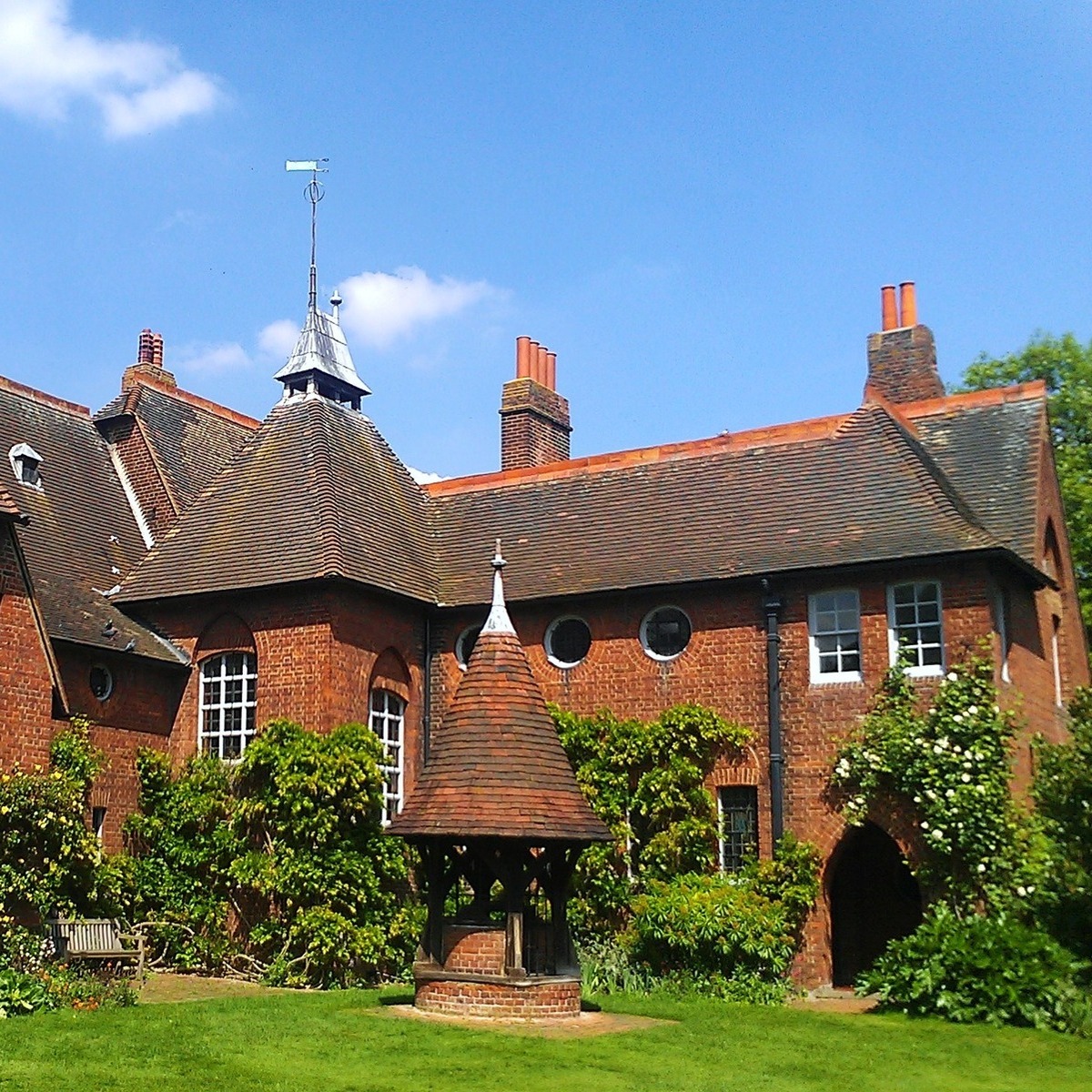Elaine’s and my recent research trip to Scotland started with a diversion to the heart of the Cotswolds where I was speaking in a symposium at Chipping Campden, one of England’s most beautiful and unspoilt small towns. Chipping Campden in its heyday in the seventeenth and eighteenth centuries derived its wealth from the wool of the Cotswold sheep, which was exported all over Europe, but by the late nineteenth century this trade had declined and the great woollen mills were abandoned and empty.
It was these that attracted C.R. Ashbee and in 1902 he moved his Guild of Handicraft from London’s overcrowded East End, taking over the empty properties and establishing his various workshops, breathing new life into what was then an impoverished backwater. The silver workshop run by the Hart family, descendants of one of Ashbee’s original craftsmen, still continues to thrive in one of the mills, and two members of the Hart family also partook in the symposium, as did Ray Leigh, the Chairman of the Gordon Russell Museum at nearby Broadway who had given us such a marvelous talk and tour there for our May tour.
I first met Ray over forty years ago when he was Chairman of the Trustees of the Edward Barnsley Workshops at Froxfield in Hampshire. Edward was a scion of one of the great Arts and Crafts families; he had first come to Froxfield as a boy, but stayed on as foreman to oversee the building of the Gimson-designed Memorial Library at Bedales School. The work of Gimson and the Barnsleys – the ‘Cottswold banditti’, as they were described in another paper at the symposium – were at the very heart of the post-Morris generation of architects-cum-furniture designers.
Ray, a sprightly ninety-year-old, who could pass for a youthful seventy, could not stay for my talk as he had to chair another event, but afterwards when I sent him my text responded that he felt that I gone to the heart of the Arts and Crafts movement by including many of the key players. I had been talking about Ashbee and the London based Art Workers’ Guild, which some of you will have had the pleasure of visiting on one or another of Elaine’s Arts and Crafts Tours.
Like so much of the Arts and Crafts Movement, architecture was at the core of the Art Workers’ Guild, whose foundation was prompted by a group of young architects discontented with the official bodies whose responsibility should have been the fostering of unity within the arts – the Royal Institute of British Architects and the Royal Academy particularly. That group of young architects – Mervyn Macartney, Gerald Horsley, Ernest Newton, E.S. Prior and W.R. Lethaby – approached Richard Norman Shaw for advice.
Norman Shaw (1831-1912) was an immensely respected and influential figure, architect of New Scotland Yard and Cragside, and, later, a large swathe of Piccadilly. Ernest Barnsley, Edward’s father, trained in his practice. Shaw pointed out that in France ‘Architects, Painters and Sculptors were trained in one common School of the Arts, and if Architecture in England was missing its way it was for the young men to bring her back from professionalism.’ By professionalism he meant the dead hand of conformity which stifled initiative. It was a call to arms and, as is recorded with exemplary precision in the Guild’s fiftieth anniversary volume: ‘On the evening of March 11th, 1884, between the hours of 8.00 and 9.00 the Art Workers’ Guild was given its name, its first rules, and its first members.’
Ashbee was not among the founders, but was elected later that year, proposed by Walter Crane and seconded by C.F.A. Voysey. Half-a-century later he recorded his memories of the first fifty Masters of the Guild, recalling William Morris reading a chapter of Brer Rabbit, Selwyn Image, whom he compared to Mr Pickwick, dispensing punch while wearing a lady’s flaxen wig, and William Blake Richmond modelling a mask and splashing about in liquid plaster at Toynbee Hall, where the Guild of Handicraft was founded.
All these men – and later women – were doers. Sir Christopher Frayling, former Rector of London’s Royal College of Art, expounded a theory in a recent lecture at the Art Workers’ Guild that the original ‘three Rs’ were Reading, wRoughting and aRithmatic’, not ‘Reading, wRiting and aRithmatic’. Very possible as the act of making – wroughting – was more essential than the art of reading for a majority of the population before the onset of the Industrial Revolution.
One result of the symposium and talks by Mary Greensted and Annette Carruthers on Gimson and the Barnsleys was to get Elaine and me thinking we would offer a tour focusing on the work of Gimson and the Barnsleys for next year. And although the purpose of our trip to Scotland was to research sites and guides for our next year’s Private Presses and Private Libraries tour, we found there is much to see and discover about their work, not only in the Cotswolds but further north and as far as the Borders of Scotland. One of the places we visited, and stayed, was Marchmont House – and that is worthy of a separate blog, which will be upcoming soon.


